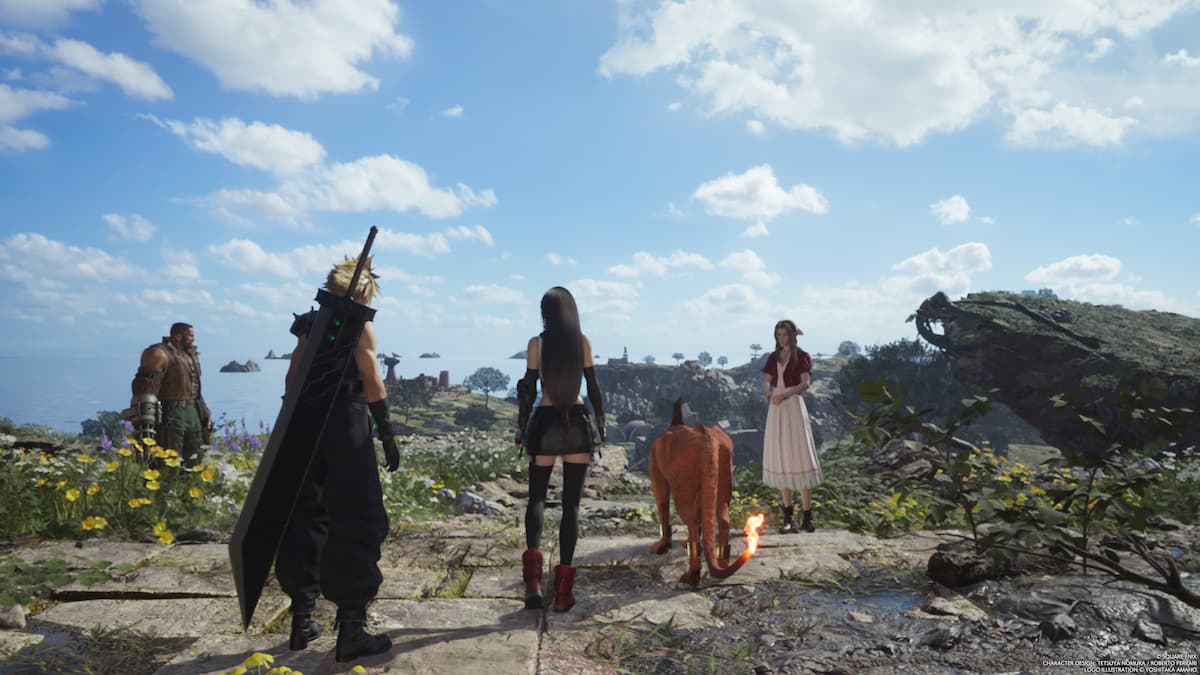
In 2017, we noticed the discharge of blockbuster titles like The Legend of Zelda: Breath of the Wild and Horizon Zero Dawn. Because of this, Nier: Automata flew beneath my radar. Nevertheless, this previous spring was the right time for me to lastly traverse Automata’s desolate and delightful open world. If somebody had informed me three years in the past that Platinum Games’ thought-provoking motion/RPG would play a big function in influencing my resolution to pursue a grasp’s diploma in game design, I would not have believed them. And but, right here I’m – again in class, and discovering all of the methods Automata continues to affect my artistic course of.
Last week, we lastly acquired a launch date and new trailer for the upgraded model of the unique Nier. Nier Replicant ver. 1.22474487139 (sure, that’s its actual title), is a remaster of the primary game – besides it’s primarily based on a model that by no means launched in North America. The occasions of Replicant hook up with the sequel’s bleak-yet-thoughtful story, so should you haven’t performed Nier: Automata already, right here’s why now’s the right time to offer it an opportunity.
Click picture thumbnails to view bigger model

Compelling Narrative(s)
Nier: Automata is a philosophical game that probes the complexities of compassion when there’s none to be discovered, the lingering traumas of struggle throughout peacetime, and the pursuit of freedom inside a system of surveillance. As elite android-soldier 2B (a twist on the well-known “To be, or not to be” Hamlet quote) and ever-curious sidekick 9S, you got down to shield an deserted Earth from an alien-robot military hellbent on fulfilling their centuries-long objective: Eradicate all people and set up whole sovereignty. While conducting missions, you work together with a colourful ensemble solid, from a pacifist robotic named Pascal, to a nefarious marionette-machine known as Simone that skulks within the shadows of a haunted theme park. Automata subverts expectations by displaying the identical story occasions by the eyes of three completely different characters, and solely when you see every arc is the game full. There are quite a lot of completely different endings, with crucial finales specializing in character motivations and even participant alternative.
In my expertise, what places Automata in a story league of its personal is the way it not solely poses packed inquiries to its protagonists about their place on the earth, however the way it additionally breaks the fourth wall and forces gamers to confront their very own socially-conditioned anxieties: Can we love, genuinely, regardless of stark variations? How a lot ache can we tolerate or forgive? Are we courageous sufficient to denounce conformity and forge an id all our personal?

Atmospheric Music
I believe Square Enix’s RPG soundtracks are gaming’s gold customary. Nier: Automata’s music, composed by Keiichi Okabe (of Tekken fame) is within the higher echelon of my favourite video game music, becoming a member of the likes of Nobuo Uematsu’s Final Fantasy VII and Yasunori Mitsuda’s Chrono Trigger soundtracks. Automata’s rating isn’t mere atmosphere. Instead, it’s straight concerned within the game’s design: Songs remodel relying on plot development. Pascal’s theme, for instance, is considered one of Automata’s extra upbeat tunes, mirroring the peaceable robotic’s childlike exuberance and cheery disposition. However, throughout extra solemn story moments, the identical track performs once more however with completely different sonic parts like a melancholy chant or contemplative piano notes. In Automata, dialogue and participant alternative are integral items of the narrative, however instrumental melodies and vocal harmonies spin complicated tales of their very own.
Additionally, Okabe depends on “chaos language” – a mix of two or extra languages (in Automata’s case, primarily German and Japanese) that create undecipherable, however oddly acquainted conlangs. This method displays the state of Automata’s setting and time-period: 2B and 9S’ futuristic, post-apocalyptic Earth is, abruptly, eerily overseas and acquainted.

Varied Gameplay
I may speak all day about Nier: Automata’s sprawling plotlines and epic rating, however what good would that be if the game wasn’t partaking or enjoyable to play? Automata’s combat is straightforward: Vanquish the robotic horde with well-placed, devastating jabs or full-auto laser beams. But what makes the game so charming is its wacky mixture of genres. Automata is an element RPG, half side-scroller, half hack ‘n’ slash, half bullet-hell – the record goes on and on. At its core, Automata is a masterful homage to an intensive record of preeminent and neglected classics, from well-established arcade titles like Galaga to hidden-gem shoot-‘em-ups like Ikaruga.
Platinum Games typically employs a dynamic digital camera to suggest adjustments in gameplay mechanics. For occasion, when the default third-person digital camera switches to a chook’s eye view, you already know you may be in for an explosive aerial warfare section. Similarly, a side-view digital camera signifies platforming sections that emphasize spatial consciousness and cautious navigation. Moment-to-moment gameplay shifts are at all times sudden, and consequently, refreshing.
Since enjoying it earlier this 12 months, Nier: Automata has emerged as considered one of my most beloved motion/RPGs. Even as I dive into different unrelated narrative-based games, Automata’s transcendental themes, outstanding soundtrack, and mercurial gameplay are by no means removed from my ideas. I missed the prospect to play the unique Nier when it got here out a decade in the past, however footage of Nier Replicant’s characters and fight are splendidly paying homage to the hallmarks that make Automata such an affecting and unforgettable expertise.
Nier Replicant launches for PlayStation 4, Xbox One, and PC on April 23.




